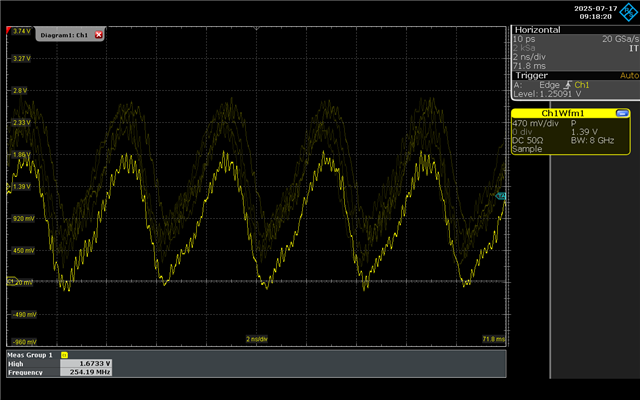Tool/software:
Hello,
I am expecting the DCLKI output to always have a 50% duty cycle with a frequency of Fs/4 in 1:2 DMUX mode. Can you confirm DCLKI will always have a 50% duty cycle please?
I have a VHDL process that is sensitive to DCLKI and as a test, the process generates a further clock as follows:
p_combine_adc_samples_rising : process(i_DCLKI, reset_n)
variable yy : std_logic := '0';
begin
if rising_edge(i_DCLKI) and reset_n = '1' then
yy := not yy;
gpio(4) <= not yy;
......
Thank you











